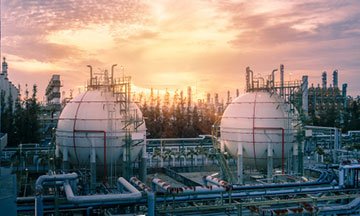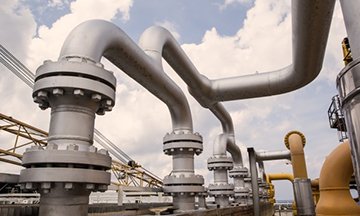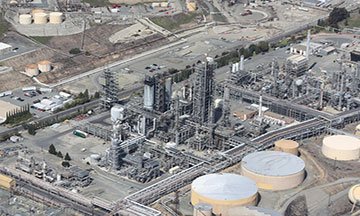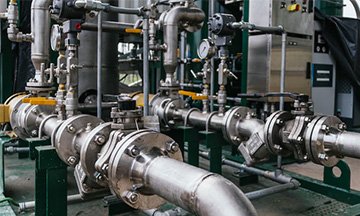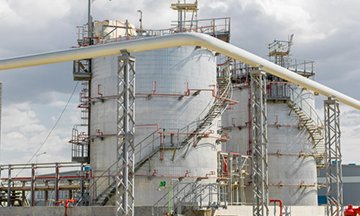LPG Terminal Design and Plant Operations Safety
| Date | Format | Duration | Fees | |
|---|---|---|---|---|
| 27 May - 04 Jun, 2024 | Live Online | 7 Days | $3147 | Register |
| 23 Jun - 04 Jul, 2024 | Live Online | 10 Days | $4495 | Register |
| 29 Jul - 06 Aug, 2024 | Live Online | 7 Days | $3147 | Register |
| 11 Aug - 15 Aug, 2024 | Live Online | 5 Days | $2250 | Register |
| 23 Sep - 25 Sep, 2024 | Live Online | 3 Days | $1750 | Register |
| 28 Oct - 08 Nov, 2024 | Live Online | 10 Days | $4495 | Register |
| 18 Nov - 26 Nov, 2024 | Live Online | 7 Days | $3147 | Register |
| 09 Dec - 11 Dec, 2024 | Live Online | 3 Days | $1750 | Register |
| Date | Venue | Duration | Fees | |
|---|---|---|---|---|
| 29 Apr - 03 May, 2024 | Dubai | 5 Days | $4750 | Register |
| 13 May - 31 May, 2024 | Nairobi | 15 Days | $13500 | Register |
| 20 May - 24 May, 2024 | Dubai | 5 Days | $4750 | Register |
| 03 Jun - 07 Jun, 2024 | Dubai | 5 Days | $4750 | Register |
| 09 Jun - 20 Jun, 2024 | Riyadh | 10 Days | $9150 | Register |
| 15 Jul - 26 Jul, 2024 | Lagos | 10 Days | $9150 | Register |
| 29 Jul - 02 Aug, 2024 | Dubai | 5 Days | $4750 | Register |
| 12 Aug - 16 Aug, 2024 | Dubai | 5 Days | $4750 | Register |
| 25 Aug - 29 Aug, 2024 | Riyadh | 5 Days | $4950 | Register |
| 11 Sep - 13 Sep, 2024 | Barcelona | 3 Days | $4475 | Register |
| 30 Sep - 04 Oct, 2024 | Dubai | 5 Days | $4750 | Register |
| 14 Oct - 25 Oct, 2024 | Amsterdam | 10 Days | $9850 | Register |
| 28 Oct - 01 Nov, 2024 | Dubai | 5 Days | $4750 | Register |
| 04 Nov - 15 Nov, 2024 | Dar Es Salam | 10 Days | $9150 | Register |
| 25 Nov - 29 Nov, 2024 | Dubai | 5 Days | $4750 | Register |
| 25 Dec - 27 Dec, 2024 | Dubai | 3 Days | $3950 | Register |
Course Overview
Liquified petroleum gas, commonly called LPG, consists of light hydrocarbon compounds, a mixture of propane and butane. It is a non-toxic but highly inflammable gas, and hence, LPG terminals need to be thoughtfully designed to prevent any hazards resulting from the physical properties of the gas.
LPG needs to be handled with care and thus all plant operations should be carried out with extreme safety, in adherence with universal standards.
LPG terminals are built to receive, store, mix and distribute LPG. Thus, considering the expanse of operations here, safety and planning are integral to the success of plant operations.
This Zoe training course will empower you with complete information and knowledge about LPG terminal designs and the safety of operations performed therein.
Through this course, you would acquire the skills and capabilities to work in any vertical of LPG operations, thus broadening avenues for greater opportunities promoting career growth.
Course Objectives
The key objective of this LPG Terminal Design and Plant Operations Safety course is to empower professionals to—
- thoroughly understand LPG terminal operations and design requirements to assist one’s organisation in these areas
- examine and change current terminal designs and layouts for one’s organisation to comply with required standards
- examine terminal operations to ensure safety guidelines are followed
- train other professionals on important aspects of terminal design and operational safety
- contribute to organisational credibility and development because of strict adherence to safety measures
- apply advanced tools and technologies in operations to enhance the safety level and reduce the risks of occupational hazards
- review existing documentation related to terminal design and plant safety to make changes with changing industrial expectations
- predict all risks that could cause damage to the environment, property and life at terminals
- oversee multiple functions end to end at LPG terminals, ensuring that all operations and processes run in sync while maintaining safety protocols
Training Methodology
Zoe Talent Solutions offers training courses across a wide range of subjects. Training is delivered by experienced professionals from the relevant domain. Part of the training is delivered as classroom sessions, and part is through practical exercises.
Trainees are assigned projects and tasks in groups, encouraging interaction among trainees and between the trainer and the trainees. Role-plays are also introduced as part of the training, wherever applicable.
This training format was conceptualised by Zoe Talent Solutions and is used for all its courses. It is called the Do–Review–Learn–Apply Model.
Organisational Benefits
With professionals undergoing this LPG Terminal Design and Plant Operations Safety course, organisations will benefit in the ways mentioned below:
- Seamless terminal operations managed by trained, experienced professionals
- Appropriate terminal design in adherence with required standards as per the physical properties of LPG, the quantity to be handled and other such factors
- A thorough review of existing documentation to ensure all procedures adhere to the required standards of safety
- Regular training of other employees on safety during operations to avoid major occupational hazards
- Detailed risk assessment and management to review possible challenges and set in place protocols to prevent organisational losses
- Organisational credibility and development because of well-managed risks, supreme terminal designs and seamless operations
- Application of advanced tools and technology to enhance the quality of operations at LPG plants
- Well-managed organisational costs because of robust safety systems to prevent occupational hazards
Personal Benefits
Professionals opting for this LPG Terminal Design and Plant Operations Safety course will benefit in the below-mentioned ways:
- Complete understanding and detailed information about LPG terminal designs and plant operations safety
- Greater understanding and knowledge to review current terminal designs and make changes as per required safety guidelines
- Improved exposure and confidence to check existing documentation of one’s organisation to ensure that these adhere to the required standards of safety and operation
- Enhanced foresight to combat all possible risks that could compromise safety levels
- Increased knowledge and confidence to train other professionals on essential features of the terminal design and required standards of safety in operations
- A sense of pride from contributing to organisational credibility and development through enhanced operational safety and efficiency
- Greater potential to manage organisational costs by maintaining high levels of safety and preventing financial losses
- Better understanding and exposure to work with advanced technology to achieve operational excellence and reduce the risks of occupational hazards
- Enhanced skill set and capabilities to assume higher roles and responsibilities involving supervision of multiple functions of operation at LPG plants, fostering growth and development
Who Should Attend?
- Executives and others working in different functions at LPG terminals
- Managers overseeing end-to-end operation at LPG terminals
- Top management of organisations responsible for critical decision making
- Vendors involved at various stages of terminal operations
- Internal/External auditors checking for compliance with all required standards
- Legal officers playing key roles in legal issues due to occupational hazards and other situations
- Potential investors who need to understand the organisational credibility before investing
- Any other professional interested to know more about LPG terminal design and plant operation safety
Course Outline
The LPG Terminal Design and Plant Operations Safety course covers the following topics regarding LPG terminal design and plant operation safety:
Module 1 – Overview of LPG
- Composition
- Physical properties and characteristics
- Density
- Vapour pressure
- Flammability
- Combustion
- General uses
- Advantages and disadvantages
Module 2 – Factors Influencing LPG Terminal Design
- Total storage capacity
- Minimum quantity of LPG per shipment
- Land available
- The distribution network for refilling and reselling bulk LPG
- Ease of operation and maintenance
- Automation for safer operations
Module 3 – Safety Features of LPG Terminals
- Fire-fighting and water sprinkler system
- Gas leak detection system
- Asset management system
- High integrity design
- Comprehensive emergency systems
- Tank gauging systems
- Safety valves
- Excess flow check valves
- Deluge system
- High temperature protection system
- High pressure protection system
- Flame detection system
- Emergency stop switches
- Audio and visual alarm system
Module 4 – LPG Storage Tank Location and Layout
- Location
- Screening
- Flammable material
- Horizontal direction
- Multiple tanks
- Overhead electric cables
- Bunded enclosures
- Spillage planning
- Natural phenomenon
Module 5 – LPG Tank Design
- Design code
- Design conditions
- Corrosion protection
- Tank supports
- Tank markings and labelling
- Mounded and underground tanks
- Skid mounted and mobile tanks
Module 6 – Tank Fittings
- Pressure relief valves
- Drain connections
- Contents gauge
- Service valves
- Filling connections
- Hydrostatic valves
- Emergency shut-down valves
- Pressure gauges
- Temperature gauges
- Lightning protection
Module 7 – Tank Commissioning and Decommissioning
- Leak testing
- Purging
- Inert gas purging
- LP gas vapour purging
- Water purging
- Evacuation
- Decommissioning efforts and activities
Module 8 – LPG Firewalls
- Purpose
- Siting
- Construction
Module 9 – Examination of Other Equipment
- Product transfer system
- Vaporizers
- Regulator
- Electrostatic protection
- Electrical equipment
- Fire-fighting/Emergency system
Module 10 – Loading and Unloading Facilities
- Rates of loading/unloading
- Transfer and loading/unloading equipment
- Grounding and bonding
- Hose and other connectors
- Metering equipment and valves
- LPG odourisation
Module 11 – Fire Protection Systems
- Access for fire fighting
- Firewater use
- Fire detection systems
- Fire extinguishers
- Fire-fighting foam
- Fireproofing
- Burying and mounding
- Electrical installations and equipment
- Safety precaution signs
- Lighting
- Fencing
